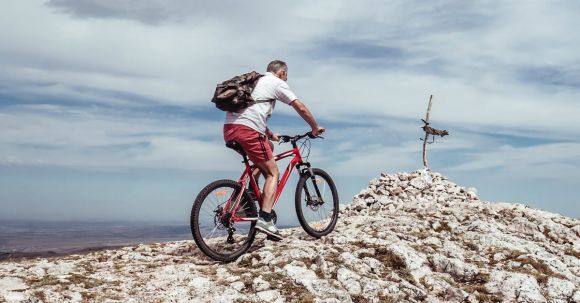Off-road riding can be an exhilarating and challenging experience, especially when navigating through rocky terrain. Riding over rocks requires a different set of skills and techniques compared to other types of off-road riding. In this article, we will explore some valuable tips and techniques to help you master rocky terrain and enjoy a smoother and more controlled ride.
Choosing the Right Line
When riding over rocky terrain, the first and most crucial step is to choose the right line. A line refers to the path you will take through the rocks. Look ahead and analyze the terrain to identify the smoothest and most stable path. Aim for areas with fewer large rocks and try to find a line that provides a balance between stability and maneuverability. Constantly reassess the terrain and adjust your line accordingly to maintain control and avoid potential hazards.
Maintaining Momentum
Maintaining momentum is key when riding over rocky terrain. Rocks can be unforgiving, and losing speed can make it more challenging to navigate through them. As you approach a rocky section, increase your speed slightly to carry you through the rocks while keeping your momentum. However, be cautious not to go too fast, as it can lead to loss of control. Find the right balance between speed and control to ensure a smooth ride.
Relax and Stay Loose
One of the most crucial techniques for riding over rocky terrain is to relax and stay loose on the bike. Tensing up can make it harder to absorb the impact of the rocks and maintain control. Keep your elbows bent and your body loose, allowing your bike to move freely beneath you. By staying relaxed, you can better absorb the shocks and bumps, keeping your bike stable and minimizing the risk of getting thrown off balance.
Use Your Legs as Suspension
Your legs can act as an additional suspension system when riding over rocky terrain. By using your legs to absorb the impacts, you can reduce the strain on your bike’s suspension and maintain better control. Bend your knees and stand up slightly on the footpegs, allowing your legs to flex and absorb the shocks from the rocks. This technique helps to smoothen out the ride and provide more stability.
Maintain a Balanced Body Position
Maintaining a balanced body position is crucial when riding over rocky terrain. Stand up on the footpegs, with your weight evenly distributed between your arms and legs. By keeping your body centered and balanced, you can better control the bike’s movements and react to obstacles. Avoid leaning too far forward or backward, as it can compromise your stability and control.
Choose the Right Gear
Using the right gear can significantly impact your ability to ride over rocky terrain. Opt for a lower gear to ensure you have enough power to navigate through the rocks without stalling. The lower gear will also provide better control and allow you to modulate your speed more effectively. Additionally, wearing appropriate protective gear, such as knee and elbow pads, will help safeguard against potential injuries from falls or impacts.
Practice Makes Perfect
Mastering rocky terrain requires practice and experience. Start with smaller and less challenging rocky sections and gradually progress to more difficult terrains. Take your time to develop your skills and techniques, honing your ability to read the terrain, choose the right line, and maintain control. With practice, you will become more confident and skilled in tackling rocky terrains.
In conclusion, riding over rocky terrain requires specific techniques and skills to ensure a smooth and controlled ride. By choosing the right line, maintaining momentum, staying relaxed and loose, using your legs as suspension, maintaining a balanced body position, choosing the right gear, and practicing regularly, you can conquer rocky terrain with confidence. Remember, practice makes perfect, so get out there and embrace the challenge!
